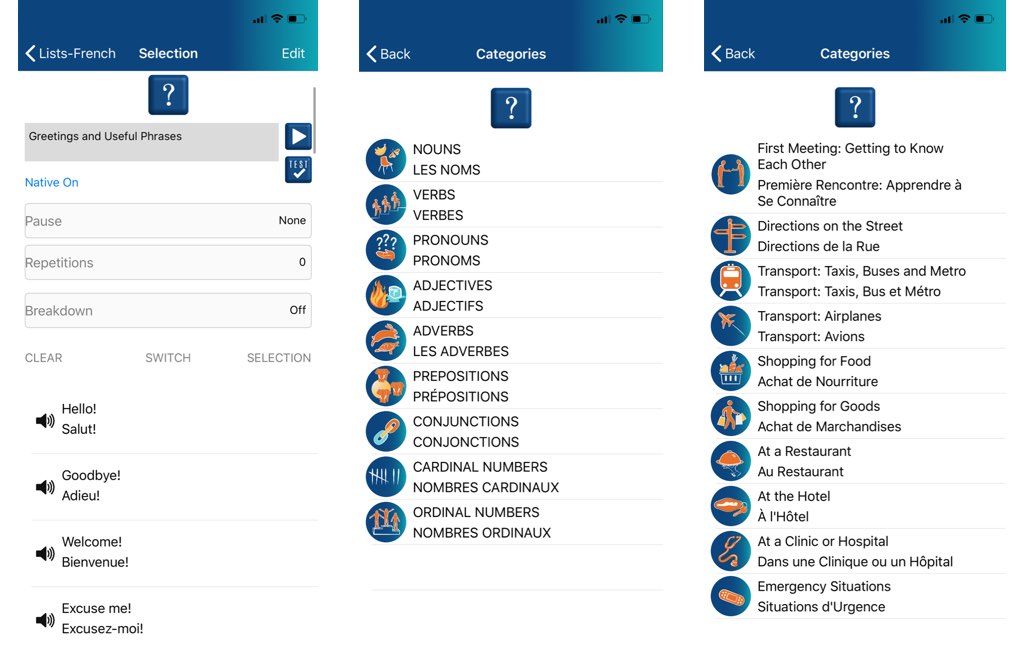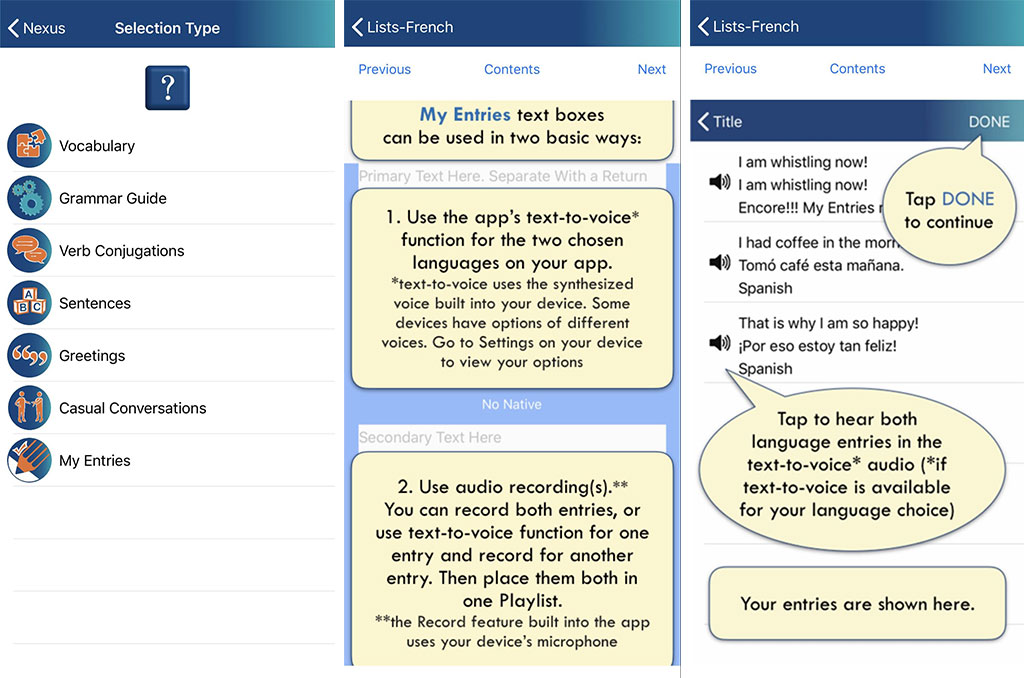Layers of Language: Understanding the Connection Between Language and Culture
The journey to understand our world begins though the language of our parents. Language itself contains multiple layers. As we grow we learn about our own culture, unveiling more of the intricacies along the way. We learn that language is more than just words and grammar. We see the layers of meanings behind the words used in daily life. Language provides a tool to understand ourselves and the world around us.
What happens when we learn an additional language? We have to go through the same process of learning and appreciating the layers of the ‘new’ language as our understanding grows. Let’s explore the 7 layers of language. Each layer we pass through increases our understanding of that language and of the culture it is connected to. Learning a new language opens doors to a greater understanding of other cultures as well as our place in the world.
What Are The Layers Of Language?
Language is one of the most important tools of a culture, it allows us to express ourselves and pass down traditions and beliefs. When learning a language as an outsider, it may take years to absorb all 7 layers. Each culture may also place a different emphasis on each one. By progressing through these layers we gain unique tools that help us handle opportunities that come our way, as well as face the challenges and crises that are a part of everyone’s life.
What are the 7 layers?
- Roadmap
- Social Norms and Friendships
- Metaphors and Idioms
- Language of Love
- Dog Whistles
- Slogans
- Language of Spirituality
By understanding what these layers are we can establish benchmarks for our growth when learning a language beyond the basic level.
1. Roadmap Layer
The Roadmap Layer is the most basic understanding of language. This is the simple dictionary definition-level knowledge of words and grammar. You know the meaning of the words in their most formal form, and how they go together to allow you to communicate simple ideas. The Roadmap allows you to handle the daily requirements of living and doing business, but lacks an intricate knowledge beyond that.
The Roadmap layer is considered to be a “working knowledge” of the language, or a “proficient” level. At this layer you have learned the language on an academic level, but in doing so have only taken the first steps into a greater understanding. Of course, without this step the rest are not possible. This could be considered the foundational step, upon which you will build the rest of your knowledge. A language learning app such as Encore!!! can be a great tool for taking those first steps and building your foundation.

A native language speaker usually reaches this level concurrently with a few of the other levels. Depending on the culture, a child could be exposed to more levels of language along with learning the basic Roadmap. Not growing up in the culture of the language means that a non-native speaker will most likely start with this first level before grasping any other, depending on how immersed they are in the culture.
2. Social Norms and Friendships Layer
The Social Norms and Friendships layer is where we begin to function socially outside of mere academic knowledge. This layer combines the overall social norms layer with the friendship layer of communication. They have distinct characteristics, but are intertwined with each other as well.
The Social Norms layer is where we learn how to communicate with others beyond the academic level. This includes the unwritten rules for daily interaction. We learn how to use respectful terms for others, to properly use gestures, eye contact, and body language, to avoid offending others, and when to speak or introduce yourself. This is the layer of language that lets you communicate smoothly with others, and helps communities conduct the business of life in a harmonious fashion. Knowing when to speak and what should and should not be said is just as important as knowing the words themselves.
The Friendships Layer builds on the Social Norms Layer and is where we learn to understand humor and express empathy. We learn the meaning of words beyond the dictionary definitions. Slang words, in-jokes, and a more informal use of words and grammar take a role in this layer as well.

Reaching this layer requires a high level of immersion in the language, as well as forming relationships with those who speak it natively. It allows you to truly begin to experience the deeper experiences of interpersonal communication and weave into the social fabric of the society. This level allows for a greater understanding of the culture, as you take part in the social aspects of it.
3. The Metaphors and Idioms Layer
The Metaphors and Idioms layer is where the complexities of language and meaning intertwine. Using words in figurative and non-literal ways requires a level of cultural competency to understand what the speaker is trying to get across. A phrase like “raining cats and dogs” could be extremely confusing (and possibly terrifying) without knowing that it is used to convey an abstract idea and not an actual event. These types of language elements require knowledge of the “lived experience” of the culture, like the roles that food, animals, weather, and even politics play in the culture.
There is also plenty of evidence that learning to understand metaphors while learning to speak a language, can enhance learning. Comprehending metaphors correctly is an important skill that goes beyond merely using them. Often one may see that people who speak in a ‘second language’ may try to relate a metaphor in their own terms, but get it a little wrong. They understand what the metaphor means, but its proper use is still a skill in development.
4. The Love Layer
Love. The emotion that has a language layer and practically a language all of its own. The idea of whispering “sweet nothings” to a lover, requires knowledge of what that language and culture thinks of as seductive. The sensuality conveyed through our words requires an even deeper experience of a culture than metaphor or idiom does. The ability to express your feelings of love or woo a lover is absolutely dependent on the culture and language you are communicating those feelings in.

5. Dog Whistles
The term “Dog Whistle” is a layer of language and also is a form of idiom, but it is a special level due to its unique ability to be understood by a special subset of the population. Just as a dog whistle is only audible to dogs, this language layer is only meant to be “heard” (or more accurately understood, again we are using metaphor now) by the people it is intended for. This type of Dog Whistle is usually used in politics and other social organizations as a way of sending a coded message to a group of people.
You hear this a lot in our modern political landscape. It is often used in reference to coded language used to appeal to racists or fundamentalist religious groups. In essence, it is trying to appeal to a large group of people while directly alienating as few as possible. It also provides the speaker of the “Dog Whistle” with a form of plausible deniability when caught in the act. In order to understand this type of language, you need to understand the cultural meanings of the terms used as “Dog Whistles” and the prejudices or ideas they represent.
6. Slogans
Slogans. They just get into your brain and drive an idea home. They manifest in everything from advertising, to politics, to protest. There are few ways as simple and effective for making a point and getting it to stick in people’s heads.
Of course, the listener needs to be able to understand the cultural context of the words for the slogan to have that effect.
Slogans appeal to our feelings as well as our cultural knowledge. How would you understand the appeal of Harry S. Truman’s presidential campaign slogan “I’m just wild about Harry” without knowing that it was borrowed from a popular song? Some avoid this by appealing to a universal idea, like McDonald’s with “I’m lovin’ it”. No matter what though, the slogan needs to appeal to cultural and emotional ideals that will capture hearts and minds.
Slogans also can encompass a wide array of the other levels we have spoken about in this article. They can be filled with idioms and metaphors, they can speak in love languages or dog whistles, and they often rely on the informal language and social knowledge of the Social and Friendship layer. That means that an understanding of all of those layers makes it easier for you to comprehend a slogan and its appeal.
7. Spiritual Level
Language does not just speak to our intellects, but also to our hearts and our spirits. Most of the beliefs in any culture are manifested through words. Words serve to pass down the spiritual traditions of cultures, giving life to them through rituals and texts. These are reasons that folks who adhere to some religious beliefs feel they are best understood or experienced through their native language. Even if the language is not quite understood by the listener, it still can offer a more intense connection than an attempted translation.
Words themselves have such a fantastic ability for us to be able to connect with our spiritual self and find your own sense of peace. Language also allows us to express our own spiritual experiences, understand them, and even share them with others. Think of language itself as a form of spiritual poetry. Once you connect the previous six layers together, then our method of inner and outer expression becomes a constantly flowing poem that radiates both within and without. Our expanded understanding of the world around us allows us to experience a greater understanding of ourselves.
Conclusion
One of the first tools known to humankind is language. The ability to understand and be understood is what has allowed us to build our societies and is the foundation of what has allowed our cultures to form and grow. Learning a new language opens up new opportunities and allows us to experience a new and expanded world. From this new expanded worldview we experience new insights and confidence. Learning a new language can help us shed our past prejudices and dogmas, expanding our cultural knowledge and understanding every step of the way.
Learning a language is more than just learning the words and how they go together to form sentences and paragraphs. That is only the first step that allows us to truly begin to understand a language on greater levels. Once we establish a foundation by learning the Roadmap layer, we then learn how that language changes and evolves for everyday use. The way that the words form new meanings, figurative language, social cues, and all the cultural aspects of the language; these all are learned in a continuing journey that starts by taking the step to start learning at that foundational level.
An app such as Encore!!! can be an excellent method for starting that journey.
One of the unique features of Encore!!! is My Entries, a feature that allows a learner to add new information (audio and text) into the app to enhance the built-in library that the app comes with. For example, a learner can ask friends or teachers to speak into Encore!!! My Entries and then later use the Playlist-Repeat-Test features to learn a new language at any level.

Encore!!! also features contributions and lessons added by native speakers, which can help add some of that cultural context and begin peeling back those Layers of Language while you learn. It is truly a great way to learn a language, or even share a language with others.
How to Use Contents in this folder
